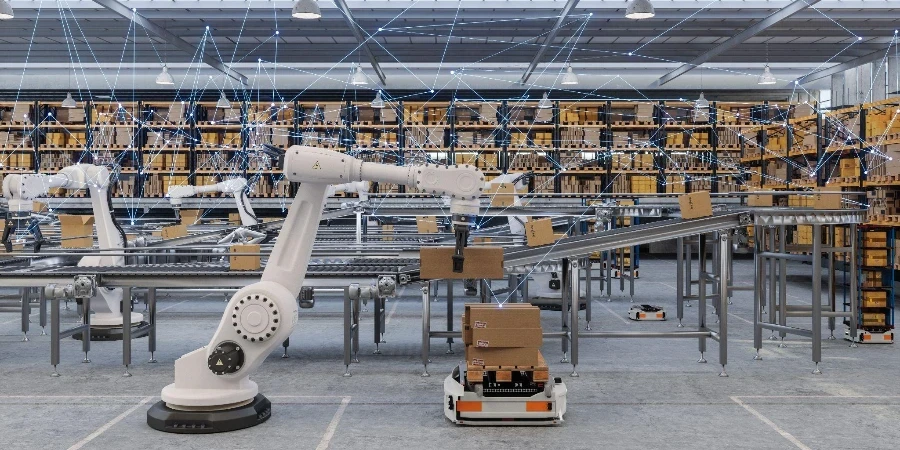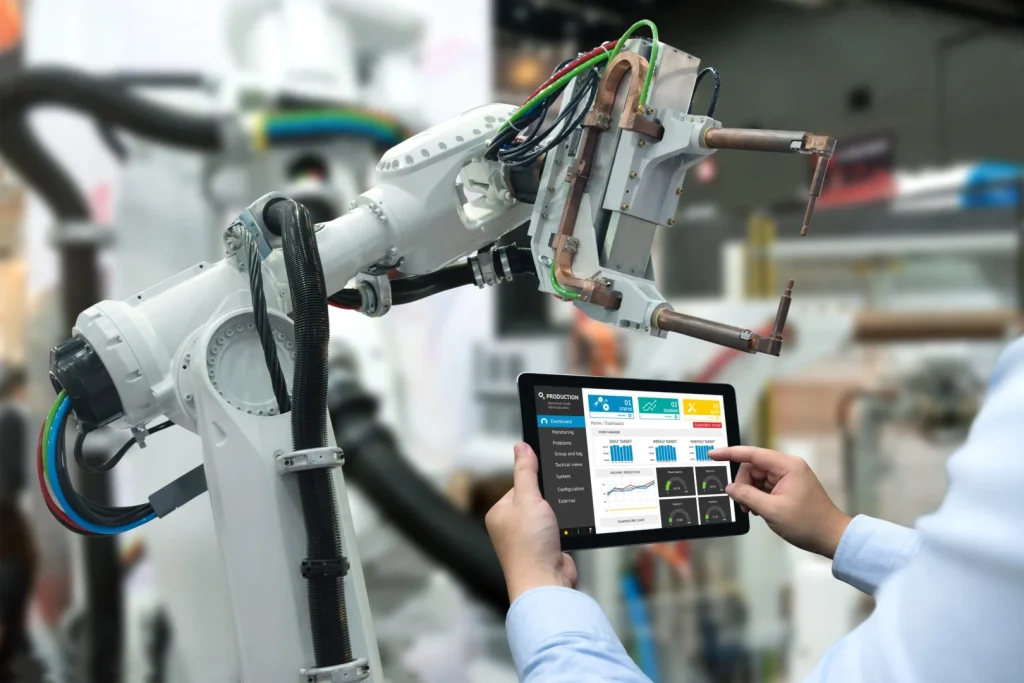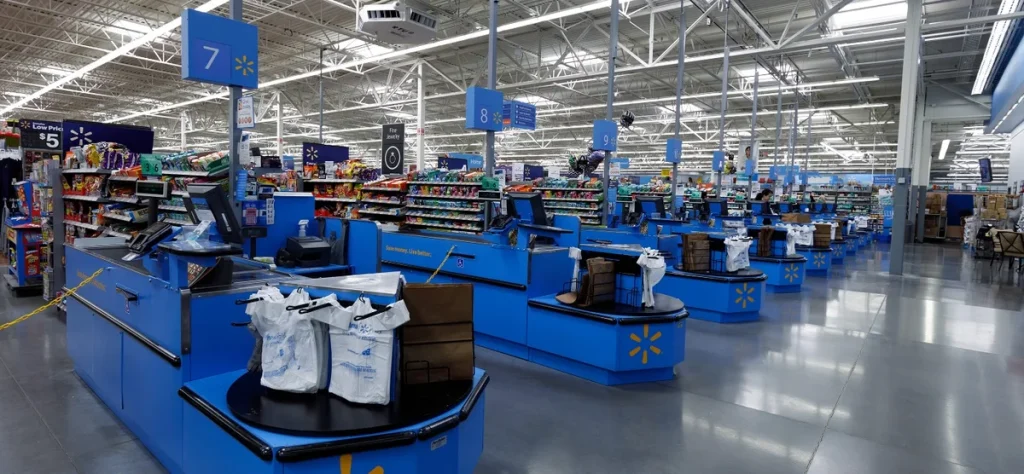Walmart, the world’s largest retailer, has long been a trailblazer in the retail industry. From pioneering supply chain innovations to setting new standards in customer service, Walmart’s influence on global commerce is undeniable. In recent years, Walmart has taken a bold leap into the future with the adoption of automation technologies, aiming to streamline operations, enhance customer experiences, and boost profitability. This article explores how Walmart Automation Services are transforming the retail landscape—and what it means for businesses, eCommerce sellers, and tech-savvy entrepreneurs.

What is Walmart Automation?
Walmart automation refers to the integration of smart technologies, robotics, and software systems into Walmart’s retail and supply chain operations. These automation services are designed to reduce manual labor, increase efficiency, and provide real-time insights into inventory, logistics, and customer behavior.
Key Concepts:
- Automation in physical stores: Self-checkouts, shelf-scanning robots, and real-time inventory tracking.
- Automation in eCommerce: Smart order fulfillment, digital merchandising, automated listings, and seamless logistics.
Types of Walmart Automation Services
Walmart employs a variety of advanced automation technologies across its operations to optimize performance, improve customer experiences, and support its vast retail ecosystem. Here’s a breakdown of the major types:

1. Inventory Automation
Walmart uses AI-powered inventory management systems that track stock levels across thousands of stores and warehouses in real time. These systems can:
- Predict when stock will run low using machine learning algorithms
- Automatically generate purchase orders to replenish inventory
- Identify slow-moving items to optimize storage space
- Sync inventory data across physical and online channels
This automation not only reduces human error but also ensures shelves stay stocked, improving availability for customers.
2. Warehouse & Supply Chain Robotics
To manage its vast supply chain, Walmart has integrated robotics and IoT technology within its distribution centers. Key components include:
- Automated Guided Vehicles (AGVs): Transport goods across warehouse floors without human assistance
- Robotic Picking Systems: Use vision systems and AI to select and sort items with precision
- Conveyor Systems & Smart Sorters: Accelerate the packing and dispatching processes
- Real-Time Tracking & Telemetry: Monitor shipments to reduce delays and improve delivery forecasting
These technologies significantly reduce operational time, minimize human errors, and allow for 24/7 operations.
3. Self-Checkout and In-Store Automation
In-store automation enhances the customer experience while reducing costs. Walmart uses multiple in-store automation technologies such as:\n
- Self-Checkout Kiosks: Allow shoppers to scan, bag, and pay for items independently
- AI-Powered Shelf Scanners: Monitor stock levels, misplaced items, and price discrepancies
- Robotic Floor Cleaners: Maintain hygiene and reduce maintenance staffing
- Mobile App Integration: Enables barcode scanning, mobile payments, and store navigation via smartphones
These in-store innovations improve shopping convenience while optimizing staff allocation.
4. Online Order Fulfillment Automation
As eCommerce demand grows, Walmart automates its fulfillment process to meet customer expectations for speed and accuracy. Key features include:\n
- Automated Fulfillment Centers: Equipped with robots that pick and pack online orders quickly and efficiently
- Curbside Pickup Systems: Notify staff to prepare and deliver orders to parked cars within minutes
- Inventory Syncing Across Channels: Ensures product availability aligns between online listings and in-store stock
- Smart Routing Algorithms: Direct orders to the nearest warehouse or store for faster delivery
These systems help Walmart fulfill millions of online orders efficiently, boosting customer satisfaction.
5. Price and Promotion Automation
Walmart uses dynamic pricing models driven by machine learning to:\n
- Adjust product pricing in real-time based on competitor pricing, inventory, and demand
- Launch promotions and discounts automatically during high-traffic periods
- Customize offers for loyalty members or specific demographics
6. Automated Customer Support
Chatbots and AI-based help centers are increasingly handling:\n
- Order status updates
- Return requests
- Product inquiries and FAQ assistance
This reduces strain on support staff and provides instant responses to common customer concerns
Benefits of Walmart Automation
The integration of automation technologies into Walmart’s operations brings a wide array of benefits, not just for the retail giant itself, but also for third-party sellers, supply chain partners, and customers. Let’s take a deeper look:

1. Unmatched Efficiency and Accuracy
Automation tools eliminate repetitive manual tasks, reduce human error, and significantly speed up operations across inventory, checkout, and fulfillment processes. Examples include:
- Real-time inventory tracking for instant stock updates
- AI algorithms that optimize warehouse operations
- Automated product listing updates for sellers
This efficiency ensures consistent and accurate service at scale, enhancing operational reliability across all departments.
2. Significant Cost Reduction
Automation helps cut down on operational costs in various ways:\n
- Reduces reliance on manual labor in warehouses and stores
- Minimizes inventory mismanagement and shrinkage
- Decreases shipping delays and return rates due to improved accuracy
Over time, these savings compound, improving margins for both Walmart and sellers using its platform.
3. Enhanced Customer Experience
Modern consumers expect seamless, fast, and personalized service. Walmart automation meets these expectations by:\n
- Shortening checkout lines with self-service systems
- Enabling accurate online order fulfillment
- Providing real-time stock availability and shipping updates
- Facilitating hassle-free returns and customer support via AI bots
These improvements translate to greater customer loyalty and repeat purchases.
4. Scalable Growth for Sellers and Dropshippers
For Walmart Marketplace sellers and dropshipping businesses, automation is a game-changer. It allows them to:\n
- Manage thousands of SKUs without manual intervention
- Automatically sync inventory and pricing across channels
- Scale their business without hiring large teams
- Focus more on growth strategy and less on operational bottlenecks
This level of scalability makes Walmart a highly attractive platform for ambitious eCommerce entrepreneurs.
5. Competitive Advantage in Retail
By leveraging automation, Walmart stays ahead of its competitors in key areas such as speed, precision, and omnichannel service. This leadership creates a benchmark in retail innovation that benefits every participant in its ecosystem.
Walmart Automation for eCommerce Sellers

Integration with Walmart Marketplace
Walmart’s Marketplace supports automated integrations through APIs and third-party platforms, enabling sellers to sync product listings, inventory, pricing, and orders.
Product Listing Automation
Automation tools help streamline bulk listing creation, updates, and optimization—saving hours of manual work.
Order and Return Management
Systems automatically route orders, update statuses, and handle returns efficiently, improving customer communication and trust.
Analytics and Optimization
Real-time dashboards, keyword insights, and competitive analytics help sellers fine-tune their strategies and boost sales performance.
Walmart Automation Tools and Platforms
Here are some popular platforms offering Walmart automation services for sellers:
| Tool/Platform | Key Features | Pricing Model |
| Zentail | Multichannel listings, automation, analytics | Tiered monthly subscription |
| GeekSeller | Walmart integration, bulk edits, order sync | Pay-as-you-go & plans |
| Ecom Circles | Automation suite, AI optimization, fulfillment services | Custom pricing |
| Sellbrite | Centralized dashboard, listing automation, reports | Freemium + paid plans |
| CedCommerce | Real-time sync, feed management, marketplace tools | Based on modules/features |
How to Get Started with Walmart Automation
Step-by-Step Onboarding:
- Apply to sell on Walmart Marketplace.
- Choose an automation platform that fits your business needs.
- Integrate your catalog using APIs or third-party tools.
- Configure automation rules for listings, pricing, and orders.
- Test the system and make adjustments as needed.
Choosing the Right Tools
- Consider budget, scalability, features, and support.
- Look for platforms with robust analytics and multi-channel integration.
Avoiding Common Mistakes
- Not syncing data properly
- Over-relying on automation without oversight
- Ignoring customer feedback or performance metrics
Challenges and Considerations
Automation Costs
Initial setup costs can be high, especially for advanced robotics or custom integrations.
Tech Dependency
A system failure could disrupt operations if there’s no manual backup plan in place.
Data Security and Vendor Reliability
Choose automation vendors with strong reputations, security protocols, and transparent policies.
Case Studies or Success Stories
Case Study: XYZ Apparel
After integrating with GeekSeller and automating listings, XYZ Apparel saw a 40% reduction in manual tasks and a 25% increase in Walmart Marketplace sales within three months.
Case Study: Home & Beyond
Using Ecom Circles, Home & Beyond automated their fulfillment and returns process, reducing order errors by 60% and enhancing customer reviews.
Future of Automation in Retail and Walmart’s Role
Emerging Technologies
- AI & Machine Learning: Personalized recommendations, fraud detection
- Predictive Analytics: Smarter inventory planning, sales forecasting
- Sustainability Tech: Automated systems designed to reduce energy usage and waste
Walmart’s Vision
Walmart continues investing in automation and tech-driven solutions to remain a retail giant. With new partnerships and R&D, they’re setting trends for future-ready retail models.
FAQs
1. What are Walmart automation services?
They are smart systems and tools used by Walmart and third-party sellers to automate inventory, fulfillment, and order management.
2. Is Walmart automation good for small sellers?
Yes. Automation platforms help small sellers compete efficiently by saving time, reducing errors, and boosting visibility.
3. Can I automate my Walmart Marketplace listings?
Absolutely. Tools like GeekSeller and Zentail offer listing automation and real-time sync.
4. What is the cost of Walmart automation tools?
Costs vary by platform; some offer free trials, while others have custom or tiered pricing.
5. What’s the future of retail automation?
It includes AI-driven personalization, robotic fulfillment, and sustainability-focused tech innovations led by companies like Walmart.
Conclusion
Walmart’s embrace of automation is more than a tech upgrade—it’s a strategic revolution. Whether you’re a small business owner, a dropshipper, or an enterprise seller, leveraging Walmart automation services can unlock unprecedented efficiency, customer satisfaction, and scalability. As the retail world goes digital, staying ahead means automating smartly.
Read more: Explore Nexus Globes for the latest news on tech, health, and entertainment.
Automate Twitter Outreach: A Smart Guide to Scale Engagement in 2025




